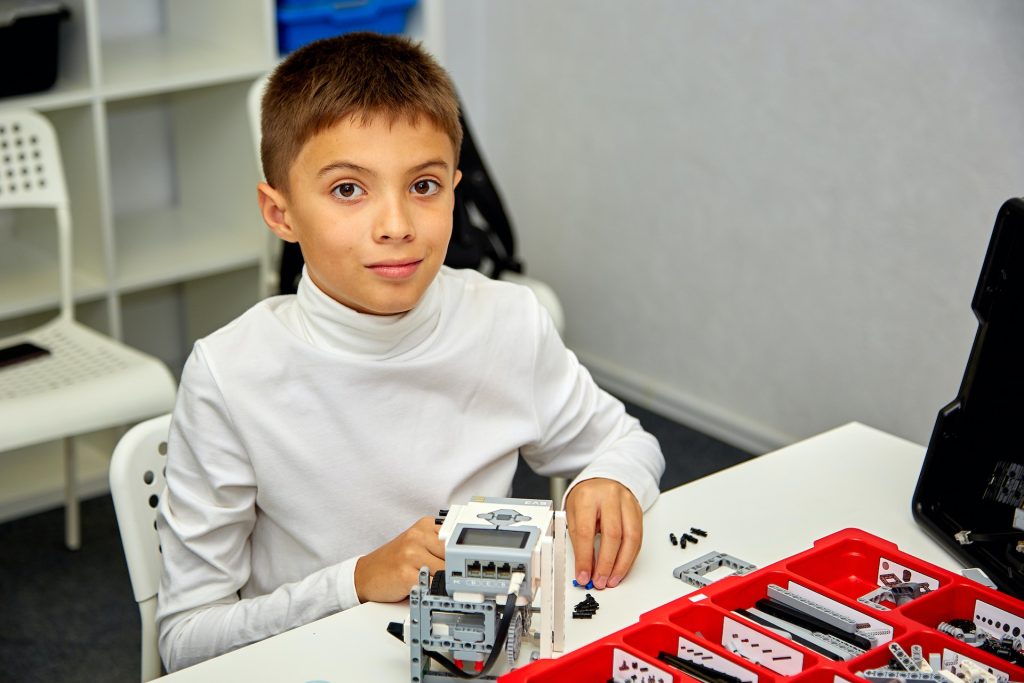Discover effective strategies and activities for teaching problem-solving skills to 7-8 year old children.
Teaching Problem-Solving Skills to 7-8 Year Old Children
Calling all parents and educators! Are you ready to embark on a thrilling journey into the world of teaching problem-solving skills to 7-8 year old children? Well, buckle up because we’re about to dive deep into the importance of these skills and explore some effective methods to help our little problem solvers thrive!
Understanding the Importance of Problem-Solving Skills

Before we unlock the secrets to teaching problem-solving skills, let’s first understand why they are so crucial. Problem-solving is like a superhero power that enables children to navigate the challenges of life with confidence. It helps them become resilient, independent thinkers who can tackle obstacles head-on. Plus, problem-solving skills are not just handy for saving the day – they also play a fundamental role in child development!
When children possess strong problem-solving skills, they are equipped with a valuable tool that can be applied to various aspects of their lives. Whether it’s solving a math equation, resolving conflicts with friends, or finding creative solutions to everyday problems, problem-solving skills are essential for success.
Moreover, problem-solving isn’t just about finding the right answer; it’s about developing a mindset that fosters curiosity, critical thinking, and creativity. When kids engage in problem-solving tasks, they activate their cognitive abilities and hone their decision-making skills. It’s like a mental gymnastics routine that strengthens their brains and prepares them for life’s puzzling situations.
The Role of Problem-Solving in Child Development
Problem-solving skills are not only beneficial in the present but also have long-lasting effects on a child’s development. By encouraging children to think critically and solve problems from an early age, we are setting them up for future success.
When children engage in problem-solving activities, they learn to analyze situations, break down complex problems into manageable parts, and explore multiple solutions. These skills promote logical reasoning, creativity, and adaptability – qualities that are highly valued in today’s rapidly changing world.
Furthermore, problem-solving activities provide opportunities for children to collaborate, communicate, and negotiate with others. They learn to listen to different perspectives, consider alternative solutions, and work towards a common goal. These social skills are essential for building strong relationships and fostering a sense of empathy and understanding.
Why 7-8 Years is a Crucial Age for Skill Development
Ah, the magical ages of 7-8! It’s a time of wonder and exploration when children are eager to learn and soak up knowledge like little sponges. This phase is perfect for nurturing problem-solving skills because kids are at a stage where they can grasp complex concepts, think in a more abstract manner, and demonstrate increased independence. It’s the ideal window of opportunity to nurture their problem-solving prowess!
During this critical age, children’s brains are undergoing significant development. They are expanding their cognitive abilities, improving their memory, and enhancing their problem-solving capabilities. By providing them with engaging problem-solving activities and challenges, we can capitalize on their natural curiosity and eagerness to learn.
Additionally, children at this age are becoming more aware of their own abilities and interests. They are developing a sense of identity and are eager to explore their strengths and passions. By nurturing their problem-solving skills during this stage, we can help them discover their unique talents and interests, setting them on a path towards personal fulfillment and success.
Key Problem-Solving Skills for Children
Now that we understand the importance of problem-solving, let’s dive into the key skills that we want to foster in our young problem solvers:

Critical Thinking and Reasoning
Encourage your kiddos to become critical thinkers by asking open-ended questions that provoke their curiosity. Help them analyze situations from different angles and weigh the pros and cons. Remember, there’s no such thing as a silly question when it comes to critical thinking!
Critical thinking and reasoning are essential skills for children to develop as they navigate through life’s challenges. By fostering these skills, you are equipping them with the ability to think independently and make informed decisions. Critical thinking allows children to evaluate information, identify patterns, and draw logical conclusions.
As parents and educators, you can provide opportunities for children to practice critical thinking in various ways. Encourage them to solve puzzles, engage in debates, and explore different perspectives. By doing so, you are helping them develop their analytical skills and expand their cognitive abilities.
Creativity and Innovation
Unlock your child’s inner Picasso or Einstein by encouraging them to think outside the box. Embrace their wild ideas, encourage their imagination, and celebrate their unique perspectives. Who knows, they might come up with the next world-changing invention!
Creativity and innovation are crucial for problem-solving because they allow children to come up with unique and unconventional solutions. By fostering creativity, you are nurturing their ability to think creatively, adapt to new situations, and find innovative ways to overcome obstacles.
There are many ways to foster creativity in children. Encourage them to engage in artistic activities such as drawing, painting, or playing a musical instrument. Provide them with open-ended toys and materials that promote imaginative play. Additionally, expose them to different cultures, experiences, and ideas to broaden their perspective and inspire their creativity.
Decision Making and Evaluation
Teach your little decision-makers the art of making choices. Offer them opportunities to practice decision-making skills, starting with small tasks like deciding what flavor of ice cream to choose or what book to read next. And don’t forget to teach them the importance of evaluating their decisions and learning from the outcomes.
Decision making is a skill that children will utilize throughout their lives. By teaching them how to make informed decisions, you are empowering them to take ownership of their choices and learn from both successes and failures. Decision-making skills involve assessing options, considering consequences, and selecting the best course of action.
Parents and educators can support children in developing decision-making skills by providing them with age-appropriate decision-making opportunities. Encourage them to weigh the pros and cons, consider different perspectives, and think about the potential outcomes. By guiding them through this process, you are helping them become confident decision-makers who can navigate through complex situations.
Remember, problem-solving skills are not innate; they are developed over time through practice and guidance. By fostering critical thinking, creativity, and decision-making skills, you are equipping children with the tools they need to become effective problem solvers in all aspects of life.
Effective Methods to Teach Problem-Solving
Well, now that we’ve got a handle on the key skills, it’s time to explore some engaging methods to teach problem-solving:
Incorporating Problem-Solving in Daily Activities
Why limit problem-solving to a specific activity when you can seamlessly integrate it into daily life? Encourage your little problem solvers to tackle challenges that arise during playtime, chores, or even mealtime. From building with blocks to finding creative solutions for storing toys, the possibilities are endless!
For example, during playtime, you can provide your child with open-ended toys like building blocks or Legos. This allows them to explore different ways of constructing and problem-solving as they try to build structures that don’t collapse. Encourage them to think critically about the best way to balance the blocks or how to make their creations more stable.
When it comes to chores, involve your child in problem-solving tasks. For instance, if you’re organizing their toys, ask them to come up with a system that makes it easy for them to find what they’re looking for. This not only teaches them problem-solving skills but also empowers them to take ownership of their belongings.
Even mealtime can be an opportunity for problem-solving. Encourage your child to think creatively about how to arrange their food on the plate or how to make a balanced meal with the ingredients available. This helps them develop critical thinking skills and fosters a sense of independence.
Using Games to Enhance Problem-Solving Skills
Who says learning can’t be fun? Engage your child in playful problem-solving games that ignite their imagination and sharpen their skills. From solving puzzles and riddles to engaging in scavenger hunts, games can turn learning into a thrilling adventure!
Puzzles are a classic way to enhance problem-solving skills. Start with age-appropriate puzzles and gradually increase the difficulty level as your child becomes more proficient. Encourage them to use logical reasoning and trial-and-error strategies to solve the puzzles.
Riddles are another fantastic way to challenge your child’s problem-solving abilities. They require thinking outside the box and often involve lateral thinking. You can find riddle books or websites that offer age-appropriate riddles for your child to solve. It’s a great way to stimulate their brain and keep them entertained.
Scavenger hunts are not only fun but also excellent for developing problem-solving skills. Create a scavenger hunt with clues that require your child to think critically and solve puzzles along the way. This activity promotes teamwork, logical thinking, and perseverance.
Role of Technology in Teaching Problem-Solving
Let’s harness the power of technology to make problem-solving even more exciting! Introduce your little ones to educational apps and interactive websites that offer problem-solving challenges tailored to their age group. They’ll be solving problems and conquering quests in no time!
There are numerous educational apps available that provide engaging problem-solving activities. These apps often incorporate gamification elements, such as rewards and levels, to keep children motivated. From math problem-solving to logic puzzles, these apps offer a wide range of challenges that cater to different interests and learning styles.
Interactive websites can also be a valuable resource for teaching problem-solving. Many websites offer interactive simulations or virtual experiments that require critical thinking and problem-solving skills. These activities provide a hands-on learning experience and allow children to explore real-world scenarios in a safe and controlled environment.
Additionally, technology can facilitate collaborative problem-solving. Online platforms and forums allow children to connect with peers who share similar interests and engage in problem-solving activities together. This not only enhances their problem-solving skills but also promotes communication, teamwork, and creativity.
Overcoming Challenges in Teaching Problem-Solving
Teaching problem-solving isn’t always a walk in the park. Here are some common challenges and strategies to overcome them:
Addressing Resistance to Problem-Solving Tasks
Not all superheroes are thrilled about facing problems. Some might resist problem-solving tasks because they fear failure or find them too challenging. Encourage a growth mindset, foster a safe space for exploration, and remind them that the journey is just as important as the destination. Before you know it, they’ll be wearing their problem-solving capes with pride!
Dealing with Different Learning Styles
Every child has a unique learning style. Some might prefer visual aids, while others thrive with hands-on experiences. Embrace these differences by offering a variety of learning opportunities. Use visual aids, encourage role-playing, and create interactive projects that cater to different learning preferences.
Ensuring Consistent Practice and Improvement
Rome wasn’t built in a day, and neither are problem-solving skills. Consistency is key! Encourage your child to practice problem-solving regularly and provide them with opportunities to learn from their mistakes. Celebrate their progress, no matter how small, and remind them that each problem solved is a step towards becoming a master problem-solver!
Conclusion
Congratulations, problem-solving enthusiasts! You’ve completed your crash course in teaching problem-solving skills to 7-8 year old children. By recognizing the importance of these skills, fostering key problem-solving abilities, and implementing engaging teaching methods, you’re setting the stage for your little problem solvers to thrive. So, go forth and empower the next generation of superheroes who will navigate the world with confidence, ingenuity, and a touch of playful problem-solving!



